[Editor’s Note: Army Mad Scientist is pleased to present our special episode of The Convergence podcast, featuring an interview with MAJ John Spencer, (USA-Ret.), and his timely discussion about the on-going war in Ukraine, urban warfare strategies employed by both Russian and Ukrainian military forces, the changing character of warfare, and what this portends for the future of conflict — Enjoy!]
[If the podcast dashboard is not rendering correctly for you, please click here to listen to the podcast.]
 MAJ John Spencer (USA-Ret.) is the Chair of Urban Warfare Studies with the Madison Policy Forum. He served over twenty-five years in the U.S. Army as an infantry Soldier, with two combat tours in Iraq as both an Infantry Platoon Leader and Company Commander. He has also served as a Ranger Instructor with the Army’s Ranger School, a Joint Chief of Staff and Army Staff intern, fellow with the Chief of Staff of the Army’s Strategic Studies Group, and Strategic Planner and Deputy Director of the Modern War Institute where he was instrumental in the design and formation of the institute.
MAJ John Spencer (USA-Ret.) is the Chair of Urban Warfare Studies with the Madison Policy Forum. He served over twenty-five years in the U.S. Army as an infantry Soldier, with two combat tours in Iraq as both an Infantry Platoon Leader and Company Commander. He has also served as a Ranger Instructor with the Army’s Ranger School, a Joint Chief of Staff and Army Staff intern, fellow with the Chief of Staff of the Army’s Strategic Studies Group, and Strategic Planner and Deputy Director of the Modern War Institute where he was instrumental in the design and formation of the institute.
In today’s interview, MAJ John Spencer (USA-ret.) discusses the on-going war in Ukraine, urban warfare strategies employed by both Russian and Ukrainian military forces, the changing character of warfare, and what this portends for the future of conflict. The following bullet points highlight key insights from our interview:
-
-
- Both with respect to the current Russia/Ukraine conflict and with modern conflict in general, urban warfare strategies are critical. This is true whether
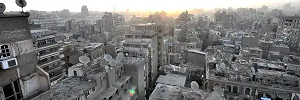 the objective requires getting past urban terrain or involves an objective that is urban in nature.
the objective requires getting past urban terrain or involves an objective that is urban in nature.
- Both with respect to the current Russia/Ukraine conflict and with modern conflict in general, urban warfare strategies are critical. This is true whether
-
-
-
- Despite Russia’s initial plans falling in line with traditional invasions, characterized by a large mass of forces that are then rapidly deployed in a “shock and awe” campaign, Ukraine’s combined arms approach to defense has prevented Russia from quickly gaining control of critical areas.
-
-
-
- Anti-Tank Guided Missiles (ATGMs) and Man-Portable Air Defense Systems (MANPADS) have been very effective in this conflict due to Russia trading combined arms operations for speed.
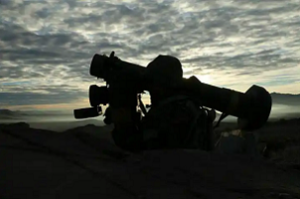 Russia’s rush to seize ground objectives in convoy without effectively utilizing their air superiority has led to many of their ground assets being destroyed.
Russia’s rush to seize ground objectives in convoy without effectively utilizing their air superiority has led to many of their ground assets being destroyed.
- Anti-Tank Guided Missiles (ATGMs) and Man-Portable Air Defense Systems (MANPADS) have been very effective in this conflict due to Russia trading combined arms operations for speed.
-
-
-
- It is tough to find a recent battle where an urban area was not the strategic or decisive objective. As Antony Beevor once stated, “The age of combined arms maneuver on the open plain is over.” The conflict in Ukraine is challenging the idea that urban fighting can be bypassed.
-
-
-
- The Russia/Ukraine conflict is sending a clear reminder to the U.S. and allied forces that many of the lessons we’ve learned in the past —
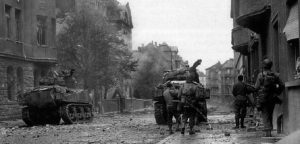 using combined arms in urban warfare, the dangers of emitting large Electronic Warfare (EW) signatures, and the importance of Command and Control — are all still relevant on the battlefield today.
using combined arms in urban warfare, the dangers of emitting large Electronic Warfare (EW) signatures, and the importance of Command and Control — are all still relevant on the battlefield today.
- The Russia/Ukraine conflict is sending a clear reminder to the U.S. and allied forces that many of the lessons we’ve learned in the past —
-
-
-
- Information from around the world can be received in the combat zone and directly influence on-going kinetic operations. When MAJ Spencer observed the call for Ukrainian civilians to be added to the
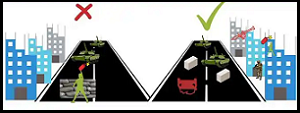 military force structure, he wrote a series of tweets on the most basic things civilian auxiliary forces could do to help in defending their nation (i.e., installing barricades at choke points along probable axes of advance to deter/halt Russian forces).
military force structure, he wrote a series of tweets on the most basic things civilian auxiliary forces could do to help in defending their nation (i.e., installing barricades at choke points along probable axes of advance to deter/halt Russian forces). 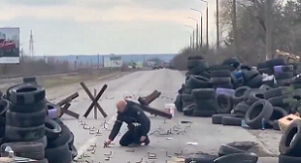 He received videos proving that Ukrainian civilians had put his advice to good use, demonstrating that the information age is changing the character of war.
He received videos proving that Ukrainian civilians had put his advice to good use, demonstrating that the information age is changing the character of war.
- Information from around the world can be received in the combat zone and directly influence on-going kinetic operations. When MAJ Spencer observed the call for Ukrainian civilians to be added to the
-
-
-
- Ukraine is capable of winning in urban warfare, because they do not have to actually defeat the enemy’s military power. In this situation, not losing is winning. Every day the Ukrainians maintain control of key urban areas, Russia
 cannot achieve its strategic objectives. Every day that passes, Russia’s political will continues to be sapped. All war is politics. Ukraine must only hold long enough for the political situation to change in their favor.
cannot achieve its strategic objectives. Every day that passes, Russia’s political will continues to be sapped. All war is politics. Ukraine must only hold long enough for the political situation to change in their favor.
- Ukraine is capable of winning in urban warfare, because they do not have to actually defeat the enemy’s military power. In this situation, not losing is winning. Every day the Ukrainians maintain control of key urban areas, Russia
-
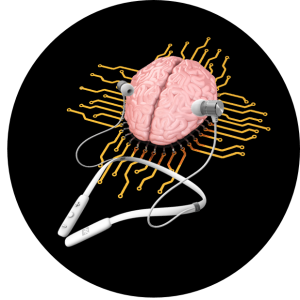 Stay tuned to the Mad Scientist Laboratory for our next episode of The Convergence podcast — Innovation at the Edge — featuring senior military leaders, field and company grade officers, and young Soldiers discussing innovation at the unit and individual level, thinking differently about modern warfare, and implementing grassroots transformation in the U.S. Army.
Stay tuned to the Mad Scientist Laboratory for our next episode of The Convergence podcast — Innovation at the Edge — featuring senior military leaders, field and company grade officers, and young Soldiers discussing innovation at the unit and individual level, thinking differently about modern warfare, and implementing grassroots transformation in the U.S. Army.
If you enjoyed this post and podcast, check out the following related content:
TRADOC Pamphlet 525-92-1, The Changing Character of Warfare: The Urban Operational Environment
A Chinese Perspective on Future Urban Unmanned Operations
Dense Urban Environments (DUE): Now through 2050
Dense Urban Hackathon – Virtual Innovation
Through Soldiers’ Eyes: The Future of Ground Combat, and associated podcast
Then and Now: Using the Past to Secure the Future, and associated podcast
Content from the Current and Future Operations in Megacities Conference, 16-19 July 2019 in Tokyo, Japan; the Multi Domain Battle (MDB) In Megacities Conference, 3-4 April 2018 at Fort Hamilton, New York, and the Megacities and Dense Urban Areas Conference, 21-22 April 2016 at Arizona State University, Tempe, Arizona. Videos of the presentations from each of these conferences may be accessed here, here, and here, respectively.
Military Implications of Smart Cities, by Alexander Braszko, Jr.
Warfare in the Parallel Cambrian Age, by Chris O’Connor
Integrated Sensors: The Critical Element in Future Complex Environment Warfare, by Dr. Richard Nabors
For additional insights regarding combat in urban terrain, please also listen to the following podcasts, hosted by our colleagues at Modern War Institute:
Walking the Urban Battlefield of Shusha, with MAJ John Spencer (USA-Ret.)
The Battle for Mosul, with COL Pat Work
The Future Urban Battlefield, with Dr. Russell Glenn
Disclaimer: The views expressed in this blog post do not necessarily reflect those of the U.S. Department of Defense, Department of the Army, Army Futures Command (AFC), or Training and Doctrine Command (TRADOC).



